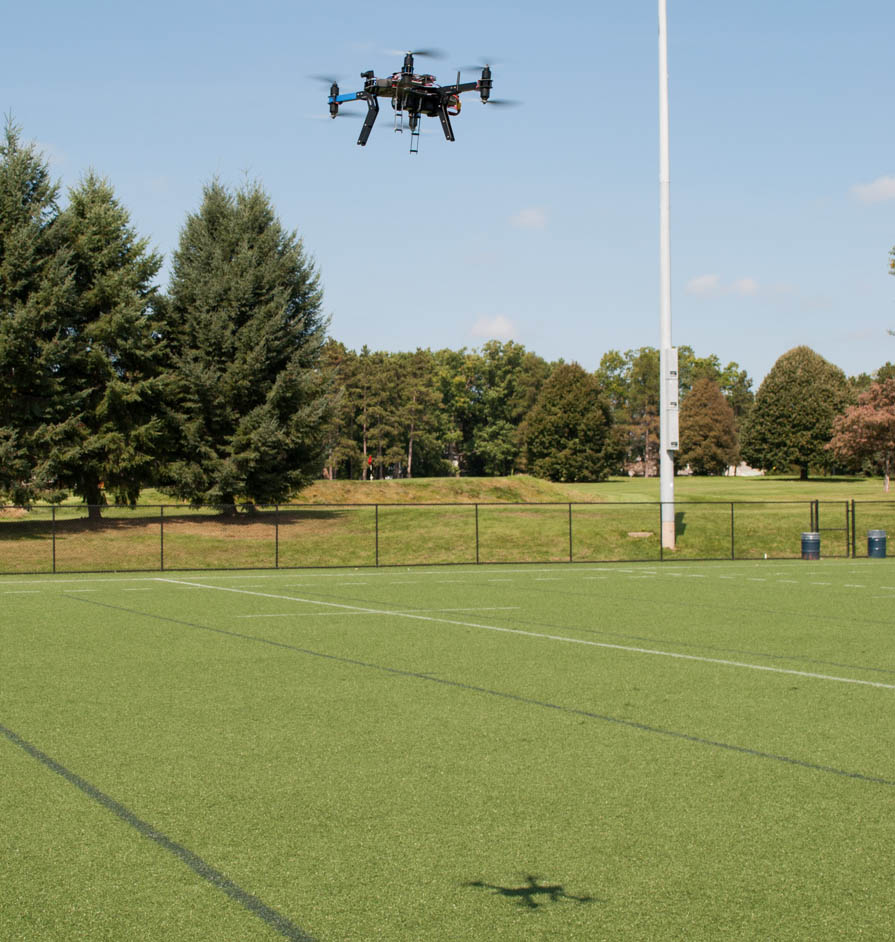IMAGE OF THE WEEK
Amanda Young reaches the top of Jigatake (Old Man Mountain) on the trail to the peak of Kashimayarigatake, where she is conducting fieldwork on the subalpine forest in the Japanese Alps along with Abby Dolinger (B.A. ’14) and Yosuke Hara.
GOOD NEWS
- Anthony Robinson will give a Science Pub talk at the State Theatre Attic on November 7 at 7:00 p.m.
- Petra Tschakert received seed funding from the International Social Science Council, under the Transformations to Sustainability Programme (~30,000 Euro). The grant will allow colleagues at Penn State, the University of Dundee, and NGO partners in India and South Africa to create a network on the role of values in societal transformation.
- Joshua Stevens was invited to be a keynote speaker for the annual Minnesota GIS/LIS Consortium occurring this week. His keynote is titled “From Sensemaking to Sharing: The Importance of Design in Geographic Analysis and Communication.”
- Audrey Lumley-Sapanski passed her proposal defense last week with flying colors. Her committee members are very excited about her upcoming research with refugee communities in Chicago.
- A Human Factors Lab paper, led by Jan Oliver Wallgrun, was accepted at the International Workshop on Geographic Information Retrieval. Paper title: “Towards a comprehensive model for interpreting spatial relational expressions.”
NEWS
October 3 Coffee Hour: Marcus Shaffer “The Machine in an Architectural Context: Construction, Destruction, and the Culture of Miracles”
Architects have always designed and fabricated machines as means of realizing their visions. The architect/engineer/priests of ancient times used machines in building construction, to wage war, and “in service to the miracle.” Before them, poets of the Golden Age recorded dreams and stories of automated figures that performed or worked as magical proxies. From the mythical origins of Daedalus to Vitruvius’s de Architectura X: Machines; from Brunelleschi’s building/theater machineries to Le Corbusier’s revolutionary Machine for Living—Architecture’s relationship with the Machine has enriched its theories, built works, and vision.
- 3:30 to 5:00 p.m.
- Refreshments are offered in 319 Walker Building at 3:30 p.m.
- The lecture begins in 112 Walker Building at 4:00 p.m.
- Coffee Hour To Go
Next Week
October 10: Clio Andris “The Rise of Partisanship and the Emergence of Super-Cooperators in the U.S. Congress”
Chinese government donates the GlobeLand30 datasets to the United NationsOn the occasion of the upcoming UN climate change summit, Chinese government donated the GlobeLand30 datasets [http://www.globallandcover.com/GLC30Download/index.aspx] to the United Nations at the UN Headquarters in New York on 22 September 2014. H.E. Mr. Zhang Gaoli, Vice Premier of the People’s Republic of China handed over the GlobeLand30 datasets to the Secretary-General, H.E. Mr. Ban Ki-moon as China’s contribution to the global cause of sustainable development and combating climate change.
Fall Newsletter: Call for updates
The Department of Geography fall 2014 newsletter is in development. The theme for this issue is social networks. Alumni, we want to hear from you. If you are working on anything related to the theme, please reply to geography@psu.edu. We also want your personal and professional updates: new job, new spouse, new baby, new award, new accomplishment, new book. Let us know what you are doing.
Tracking a Discipline’s Evolution
Two Kent State University professors frustrated by the lack of analytical data on the evolution of their discipline have compiled all of the field’s doctoral dissertations into a database to track growth and changes in the field. Professors David Kaplan and Jennifer Mapes (M.S. ‘05) hope their study will provide geographers with a comprehensive overview of shifts in the regions and topics of interest from the ground up.
Student uses technology to track French writers’ 19th-century social networks
Authors today have it rough. They compete with millions to get book deals from (mostly) the same five publishing houses, so unless they know someone in the biz or have a massive following on social media, it can seem impossible to get signed. With the pressure today to connect with potential agents and publishers online and at conferences, it’s tempting to think writers 100 years ago may have had it easier. But Hélène Huet says that’s not necessarily the case.
Residual hydraulic fracturing water not a risk to groundwater
Hydraulic fracturing — fracking or hydrofracturing — raises many concerns about potential environmental impacts, especially water contamination. Currently, data show that the majority of water injected into wells stays underground, triggering fears that it might find its way into groundwater. New research by a team of scientists should help allay those fears.
Recently (or soon to be) Published
Wayfinding Behaviors in Complex Buildings: The Impact of Environmental Legibility and Familiarity
By Rui Li and Alexander Klippel
In Environment and Behavior
To contribute to a more comprehensive understanding of human wayfinding behaviors in complex buildings, we propose a framework that incorporates the impact of critical factors from both the environment and humans. The influence of the environment is summarized through the concept of environmental legibility (EL), an integration of different space syntax methods that addresses visibility, connectivity, and layout complexity of buildings. Human factors are assessed through psychometric tests, self-ratings for sense of direction, and a report of familiarity. To test this framework, we conducted behavioral experiments involving 24 novices and 28 experts. Three different processes of wayfinding—wayfinding performance, acquisition of spatial knowledge, and development of spatial awareness—were measured and evaluated. Results show that EL and individual differences impact all three processes. There is a predominant impact of EL on wayfinding performance and the development of spatial awareness. Not surprisingly, familiarity has a predominant impact on the acquisition of spatial knowledge.
DOG OF THE WEEK
Send your answer and/or a photo of your dog to geography@psu.edu for our mystery dog of the week!







